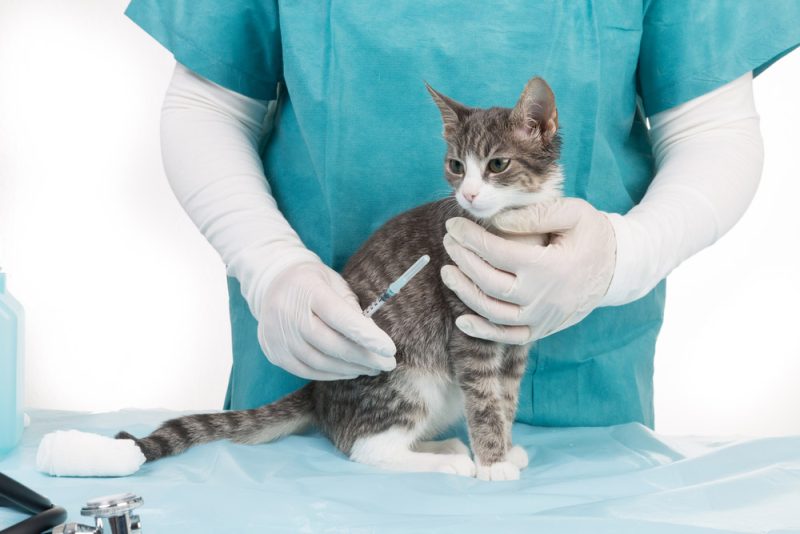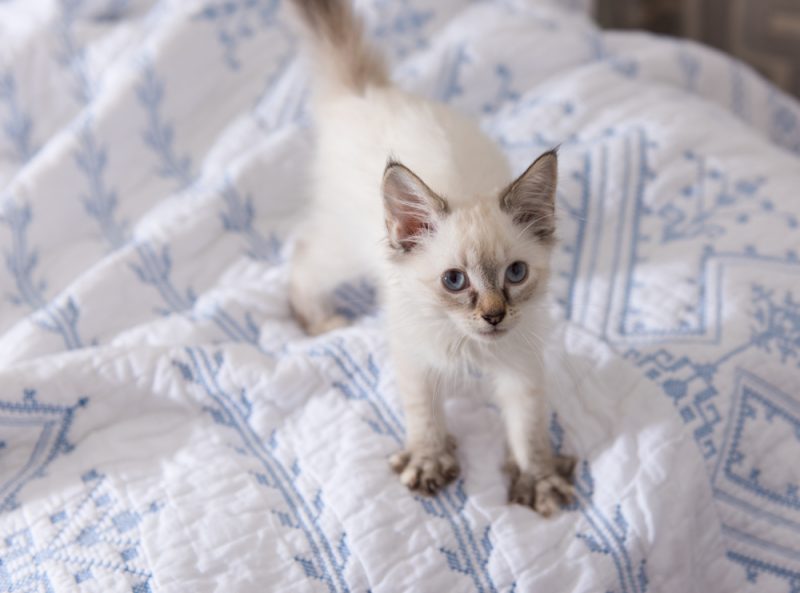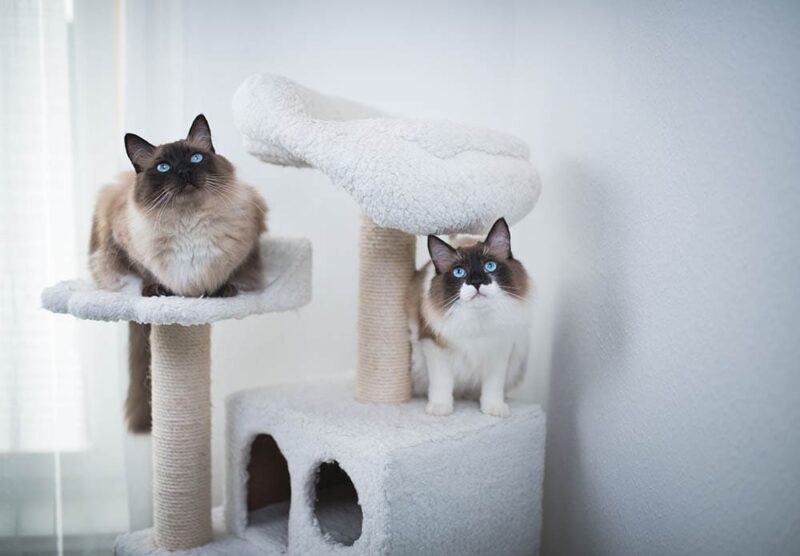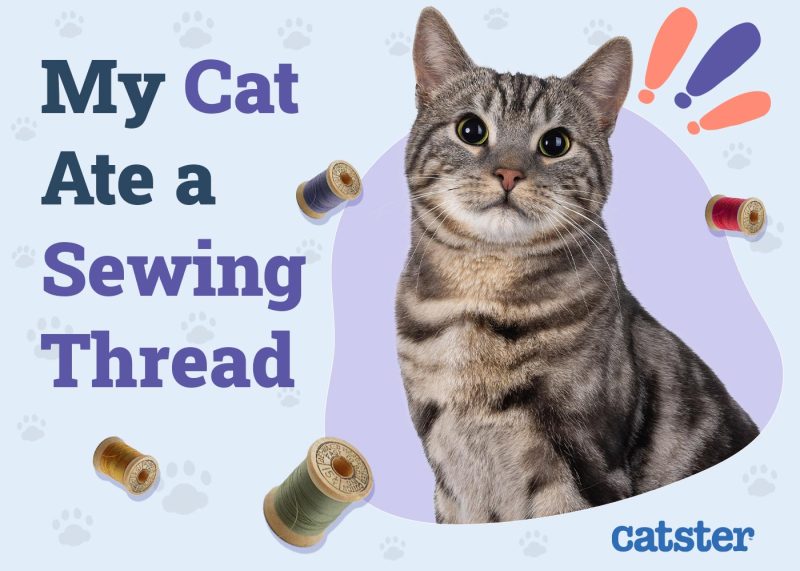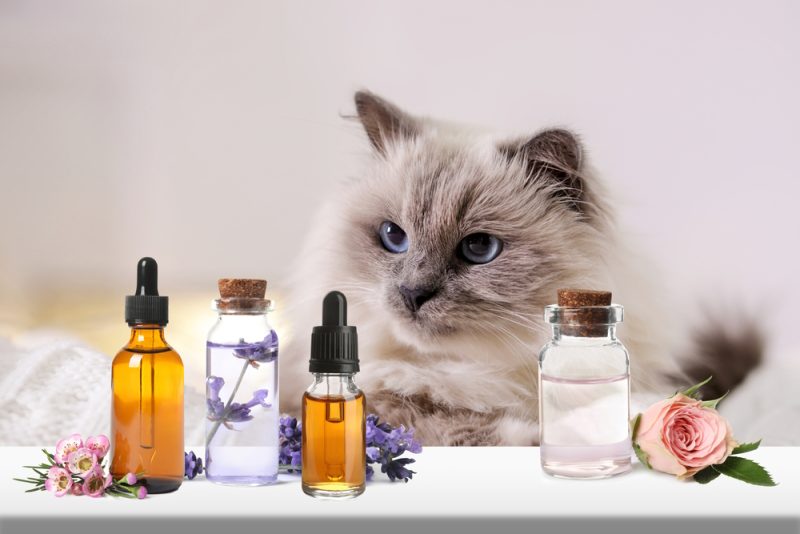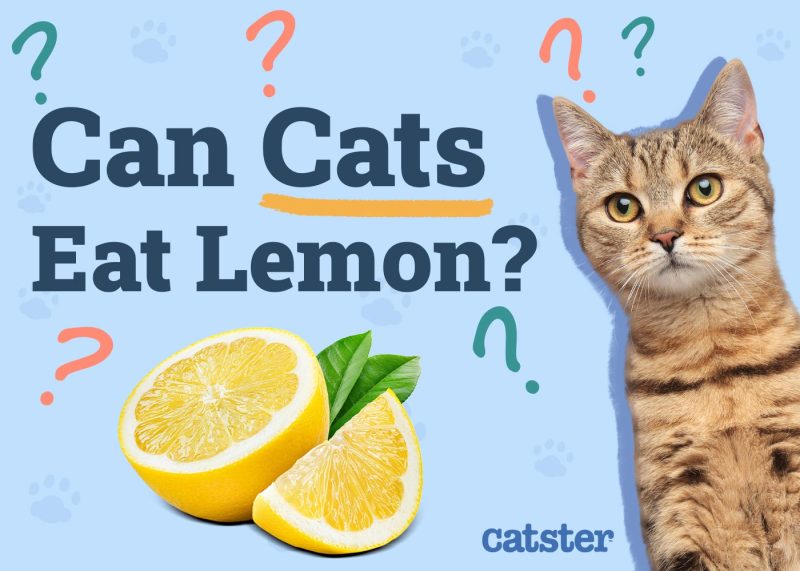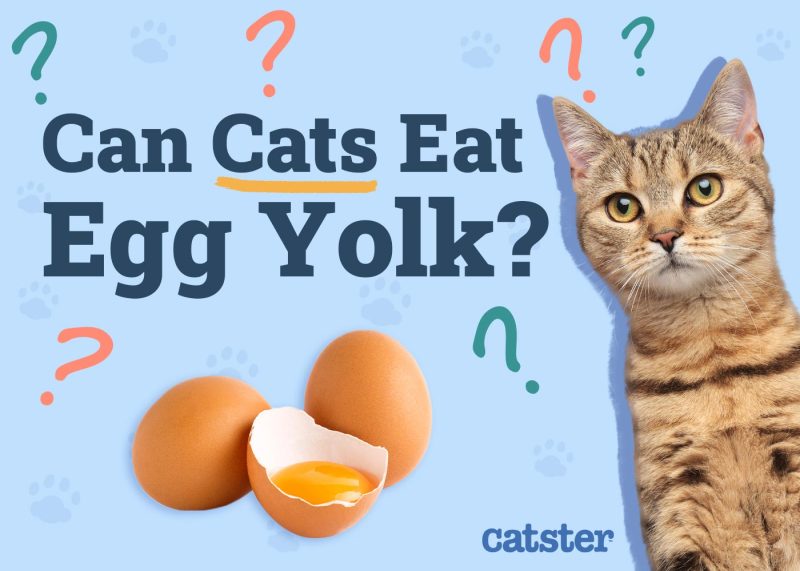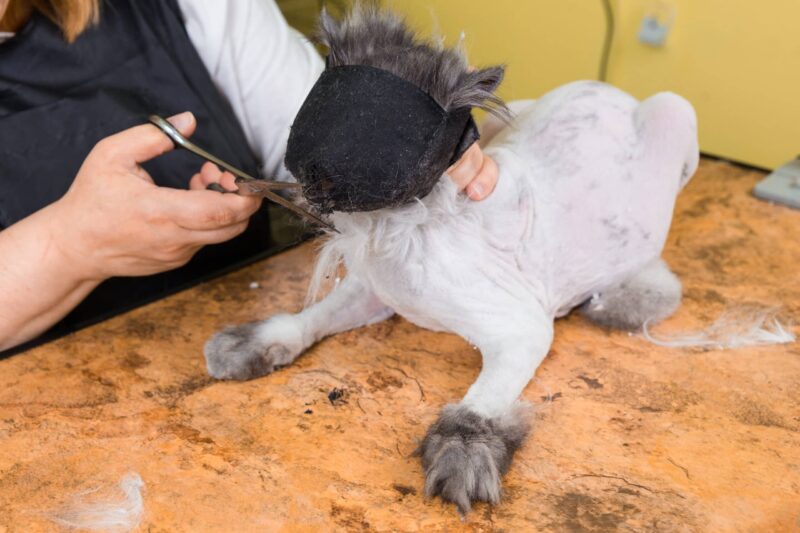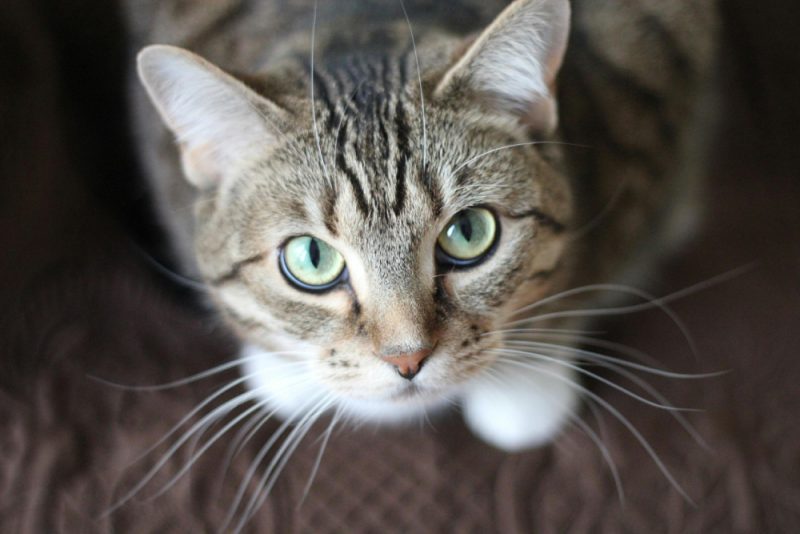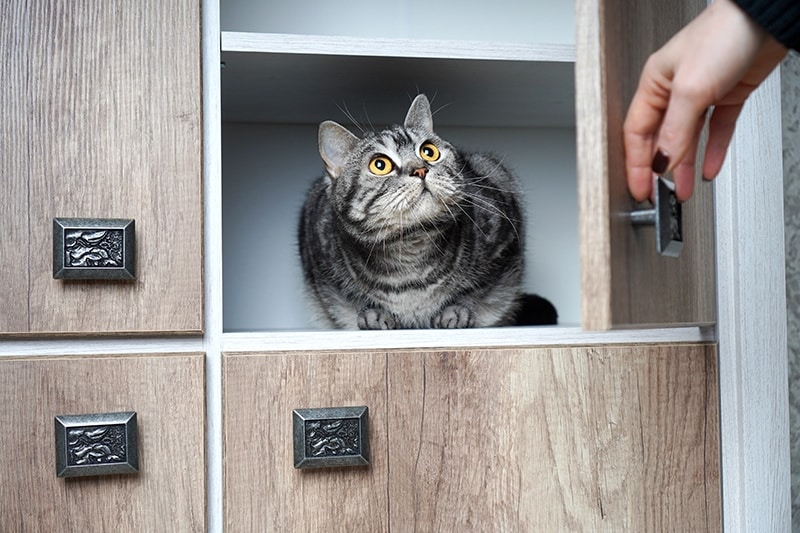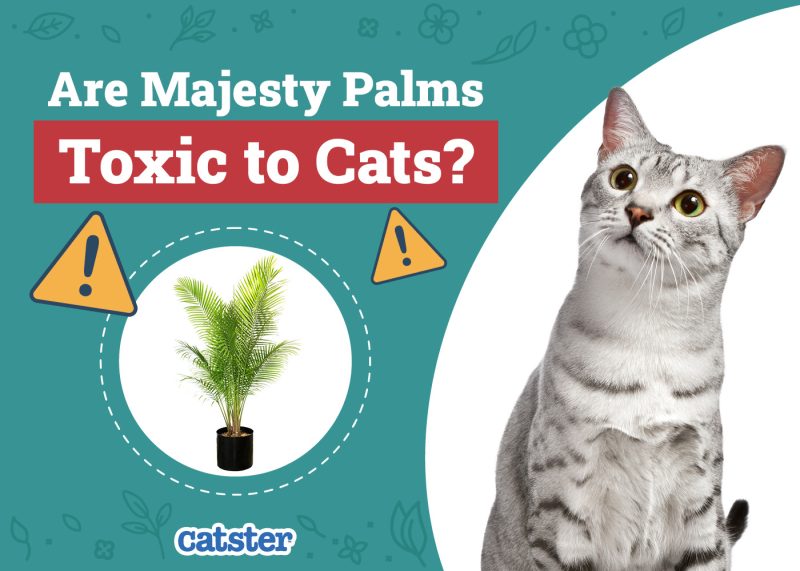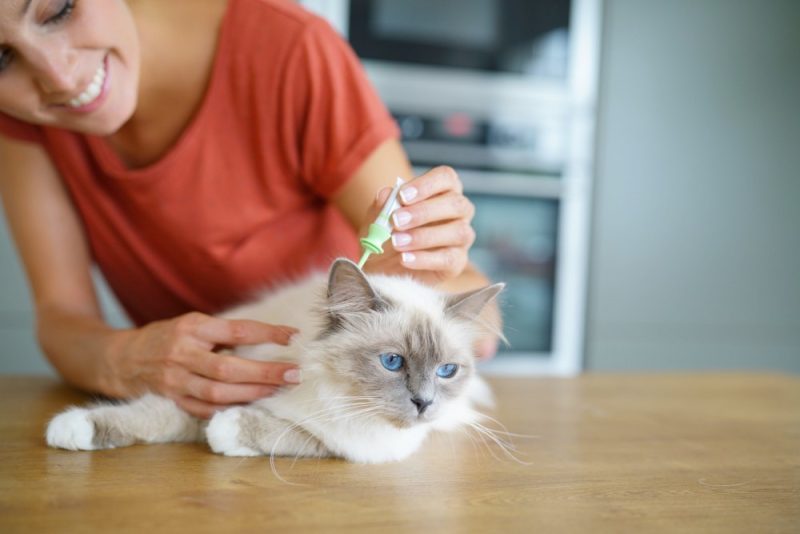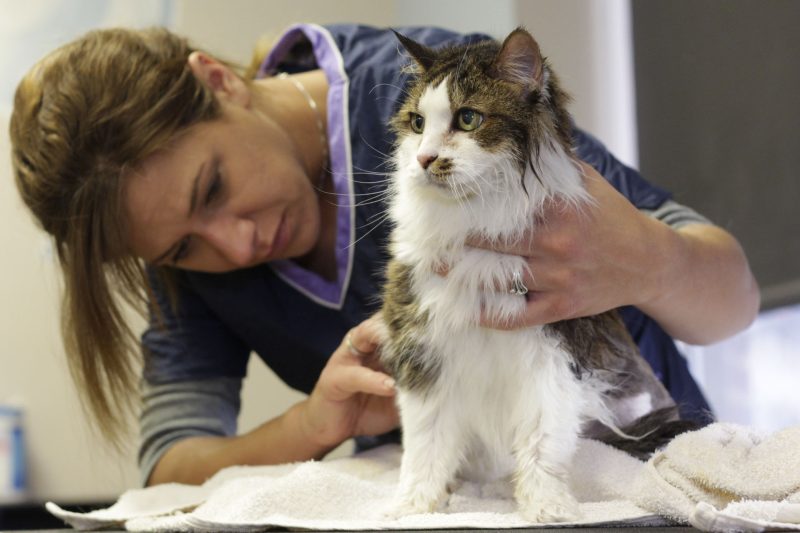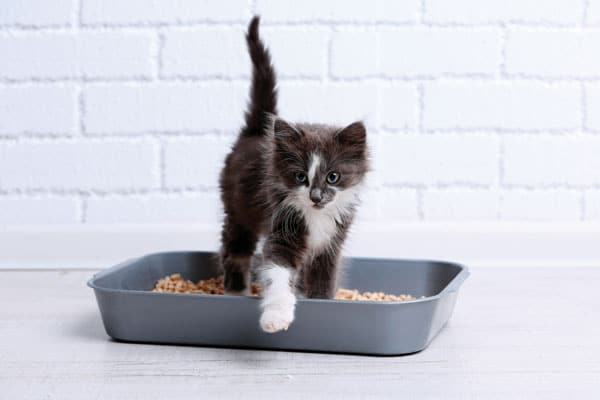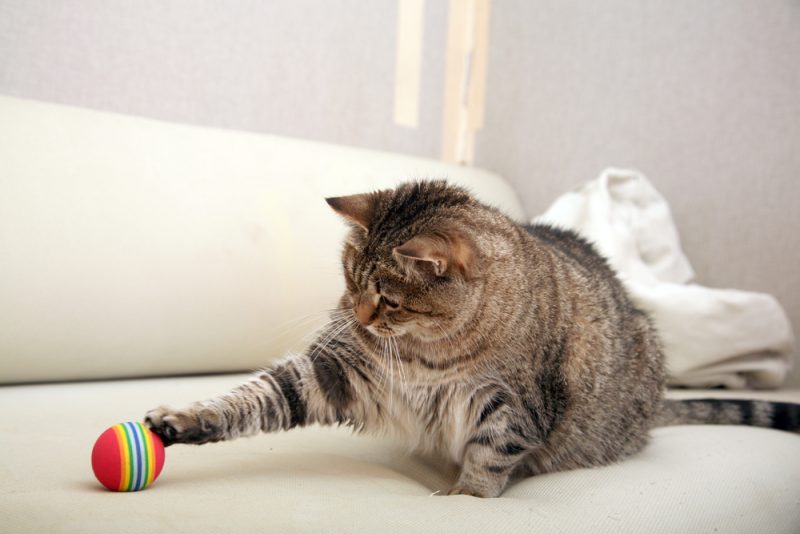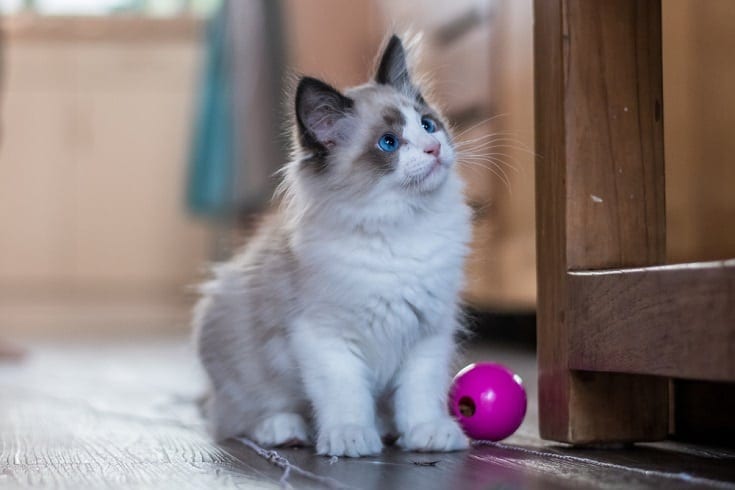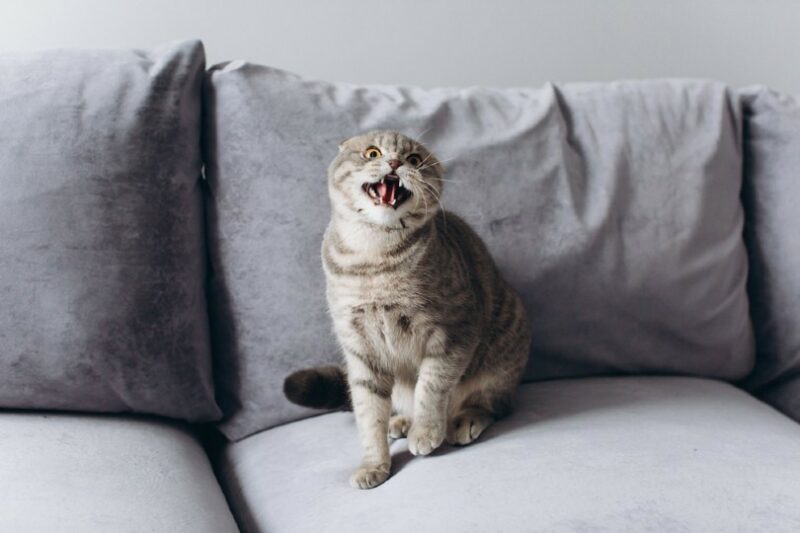In this article
Taking care of a cat involves more than just providing them with food, water, a litter box, and a bed; it means looking out for their health and preventing disease wherever possible, and a part of this is through vaccination.
Although not compulsory, the American Association of Feline Practitioners Vaccination Advisory Panel recommends that all cats, even those housed indoors, receive a set of vaccinations often referred to as the “core” vaccines. These include feline herpesvirus, calicivirus, panleukopenia, rabies, and feline leukemia virus (FeLV).
These days, we all want to become a bit more educated about the types of vaccines our vet is recommending and understand their importance and the risks of side effects. Although the FeLV vaccine does have a potentially dangerous side effect to be aware of, the risk of your cat becoming infected with this deadly disease is far more significant.
We’re going to take a closer look at what feline leukemia is, how the vaccine works, and what the pros and cons of vaccination are.

What Is Feline Leukemia Virus (FeLV)?
FeLV is a retrovirus, which means that it operates by inserting its own DNA into the cells it has infected, effectively hijacking the body’s own cellular replication system. FeLV is prevalent in cat populations throughout the world, with a prevalence of between 3 to 13% in the US, and is the most common cause of feline cancer. FeLV can affect cats in different ways, such as limiting their immune function or inhibiting blood cell production in the bone marrow. It invariably shortens lifespan, and there is no cure.
Unlike feline immunodeficiency virus (FIV) which is also a retrovirus spread predominantly through fighting, FeLV is sometimes known as the “friendly cat disease,” with viral transmission sometimes occurring through the sharing of food bowls and mutual grooming. Cats infected with FeLV are constantly shedding viral particles in the saliva, urine, feces, milk, and other bodily secretions, and infected mothers can spread the virus to her unborn kittens.
The risk of your cat’s exposure to FeLV will depend on their lifestyle and the disease prevalence in your area. Because kittens can be born with this disease, it is a good idea to have individual cats tested before any new introductions to the household, particularly if your cats go outside, you live in an area of high FeLV prevalence, or your cat has had a history of illness.
Fortunately, there is a highly effective vaccine that can prevent your cat from becoming infected with this devastating virus, but there are some potential risks you need to be aware of.
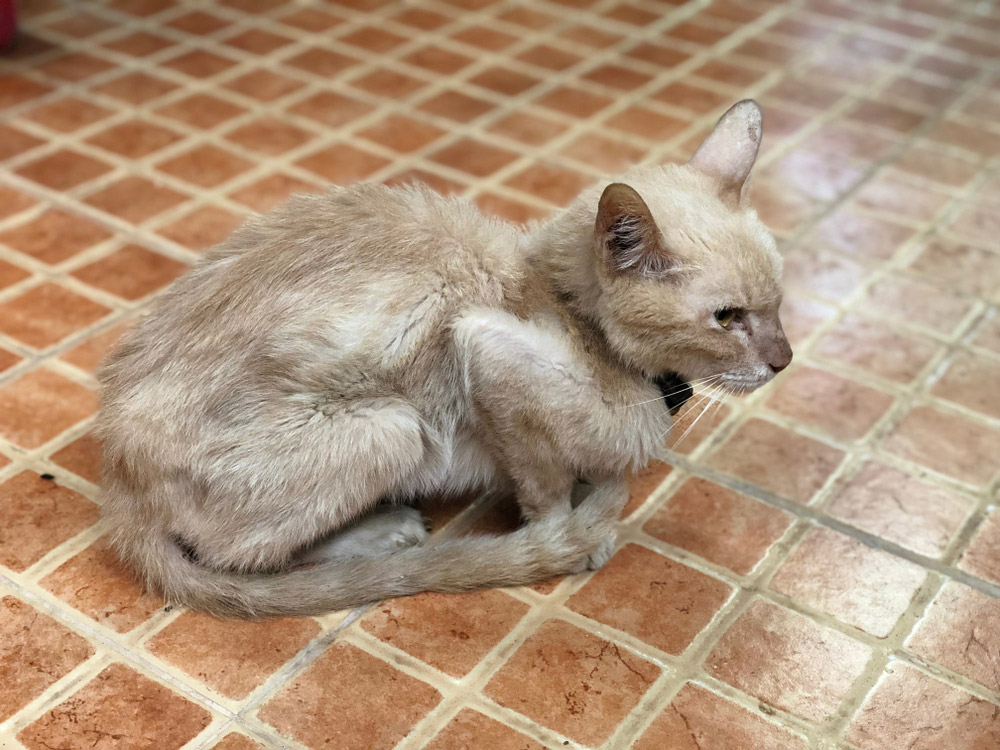
How Does the FeLV Vaccine Work?
When the body encounters a pathogen like FeLV, there is an initial immune reaction, but this is a basic, non-specific attack. It takes time for the immune system to recognize the viral antigen and create specific antibodies to fight it, so there is a period where the virus can take hold before a proper defense is initiated. This is stage 1 viremia.1
If the infection is defeated, the immune system “remembers” the antigen for a period of time (months to years) so that the next time it encounters it, the targeted immune response is almost immediate because the body already knows which antibodies to produce.
In the case of FeLV, if the virus is not eliminated by the immune system during stage 1, it will progress to stage 2, or persistent viremia, where the virus invades the cells and bone marrow and can no longer be eradicated.
The FeLV vaccination works in much the same way as all vaccines. It introduces an altered version of the virus, which triggers the immune system to mount a defense, creating a memory of the antibodies specific to FeLV to be used in the future. This way, if your cat comes into contact with FeLV, the immune system is able to rapidly eliminate the infection during stage 1 viremia, preventing the progression to stage 2.
Different viruses and vaccines have different vaccination intervals, depending on how long the immune system continues to produce antibodies to the virus, which is why some vaccinations are given every 12 months and others are only needed every 3 years.
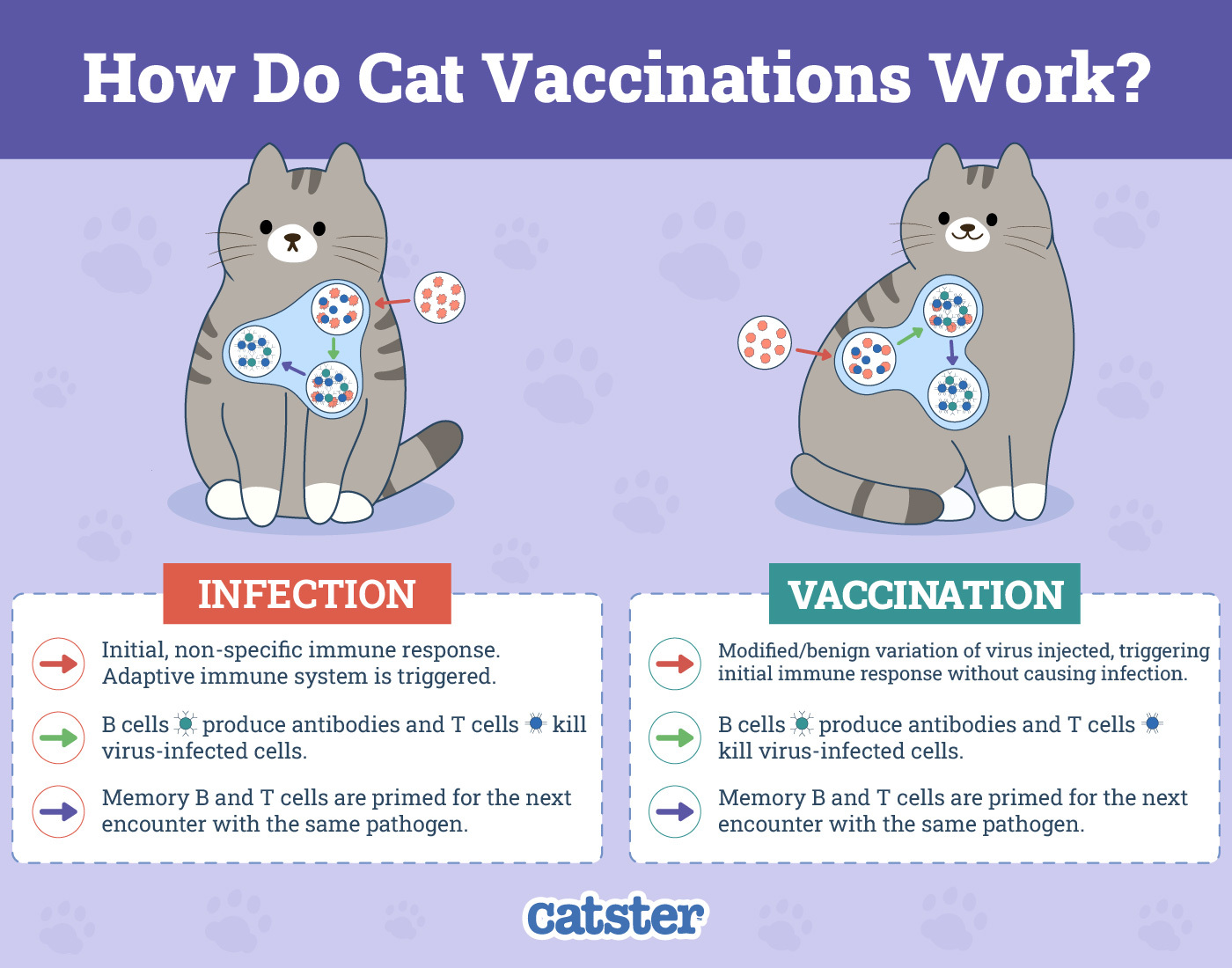
What Are the Risks Associated with the FeLV Vaccine?
All vaccines have the potential to cause adverse reactions, ranging from mild pain or swelling to severe allergic reactions (which are fortunately extremely rare). The most common side effects of the FeLV vaccine are localized pain and swelling, fever, and lethargy, and some cats will develop a firm lump at the injection site that can persist for several weeks. These signs are typical of local and systemic immune stimulation and rarely require treatment, but you should contact a vet if you have any concerns.
If you need to speak with a vet but can't get to one, head over to PangoVet. It's an online service where you can talk to a vet online and get the advice you need for your pet — all at an affordable price!

Allergy or anaphylaxis is a rare complication of vaccination that usually appears shortly after injection in the form of increased heart and respiratory rate, swelling around the injection site and/or the face and head, hives, and high temperature. If you notice any of these signs, make your way back to the vet urgently.
By far the most significant potential side effect of feline vaccination, particularly the FeLV vaccine, is feline injection site sarcoma (FISS), an aggressive form of cancer that can appear at the site of vaccination months or even years after injection. It is believed that the most likely factor influencing the development of FISS is the adjuvant—a substance that helps maximize the body’s response to the vaccine.
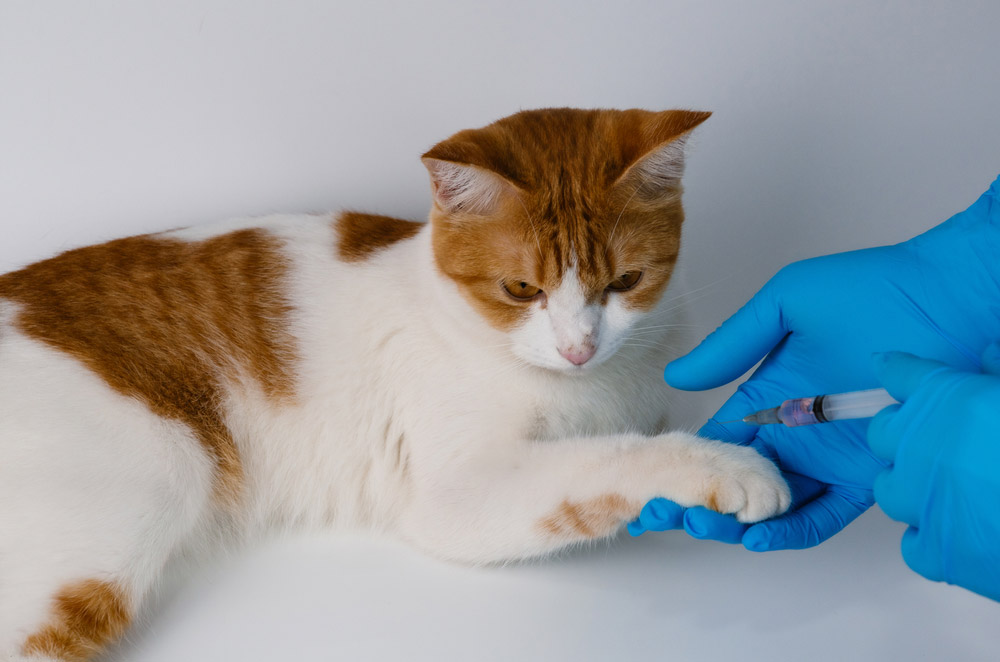
Wait, What? Cancer?
Yes, FISS is a devastating complication of vaccination, but it is also a rare one. FISS is the subject of continuing research, with many questions still unanswered, but the current statistics indicate that the incidence of injection site sarcomas is between 0.003–0.1% of vaccinated cats, compared to the prevalence of FeLV in the US of at least 3%.
Reducing the Risk of Injection Site Sarcomas
There are a number of steps and recommendations being implemented to help minimize the risks of cats developing FISS, which you can talk about with a vet. They include:
- Injecting the vaccine over a limb rather than the scruff – This allows for the life-saving amputation of a limb if your cat were to be affected by FISS. A sarcoma in the scruff region will have limited options for surgical removal.
- Using different vaccine types – A non-adjuvanted FeLV vaccine called Purevax has been developed. Although results are not yet definitive, there are promising indications that this vaccine carries a much lower FISS risk. However, it is more expensive and requires an annual booster, rather than the three-yearly adjuvanted vaccine.
- Tailoring vaccination schedules based on risk factors – If your cat lives exclusively indoors, the vet may talk to you about stopping the FeLV vaccine, only giving a booster if a new cat is being introduced into the household or if your cat is going into a boarding facility.
Recommended FeLV Vaccination Schedule for Kittens and Adult Cats
Kittens should receive their first injection against FeLV at around 8 weeks of age, with a booster after 3-4 weeks. There may be some adjustments to the vaccine schedule based on the individual cat’s circumstances, age, and health. Afterward, based on the cat’s lifestyle, single vs multicat household, access to the outdoors, and general health, all of which impact the risks associated with contracting FeLV, the vaccinations may be carried out annually. This is the case for for high-risk cats and when using non-adjuvanted vaccines, based on the manufacturer’s recommendations.
When using adjuvanted vaccines and for cats in low-risk circumstances, a booster may be administered every 3 years. Vaccinations against FeLV may be reduced in some cases based on veterinary advice, such as having a single-cat household, exclusively indoor cat, geriatric cat, or in case of certain health issues. However, for kittens and cats under one year of age, it’s important they receive the FeLV vaccine, which is considered part of their core vaccines. After the first year of life, FeLV is no longer considered a core vaccine for cats that are at no risk of exposure to FeLV-infected cats or those of unknown vaccination status.
Should I Vaccinate My Cat?
The decision to vaccinate your cat is your own, and you should talk to a vet about the potential risks and benefits that apply to your specific situation. Being a relatively common and deadly virus, if the likelihood of exposure outweighs the risk of FISS, vaccination is recommended. If you have a multi-cat household, breed cats, if your cats can have contact with cats outside your household, or if you regularly rescue cats, vaccination against FeLV is definitely worth considering.
With the exception of the rabies vaccination, there are no specific rules or laws about feline vaccination, and it is up to you to learn as much as you can so you can make a decision you feel comfortable with. Although the vaccine manufacturer will specify vaccination intervals, they are not law. But be aware that if you deviate from those recommendations, the vaccine efficacy will not be guaranteed.

Final Thoughts
Feline leukemia virus is one of the most important infectious diseases in feline populations worldwide, and there is no cure. Although there are risks inherent with vaccination, these risks can be mitigated by learning about the prevalence of the disease in your area, finding out what type of vaccine is used by the vet, deciding on a plan that keeps your cat safe, and advocating for their best interests.
Remember that your decisions about vaccination are more than just “yes” or “no,” and your cat’s risk levels can change over their lifetime. Talk to a vet about their recommendations and make an informed decision for your cat.
Featured Image Credit: bmf-foto.de, Shutterstock
